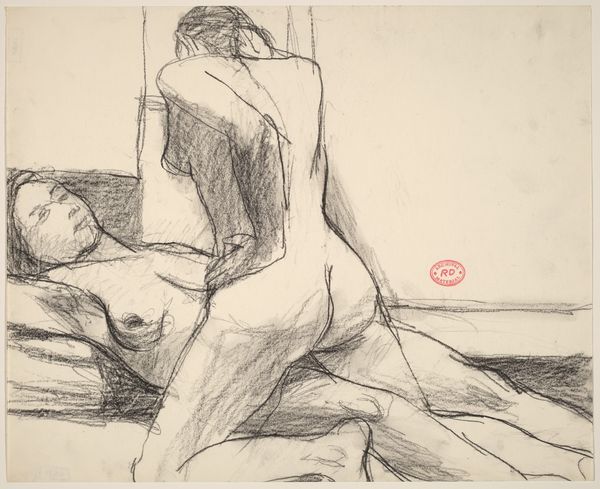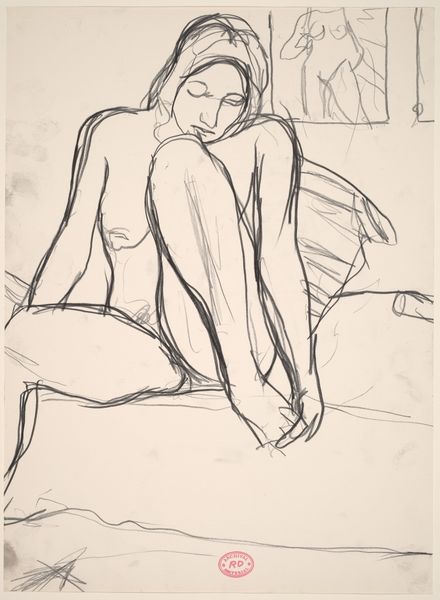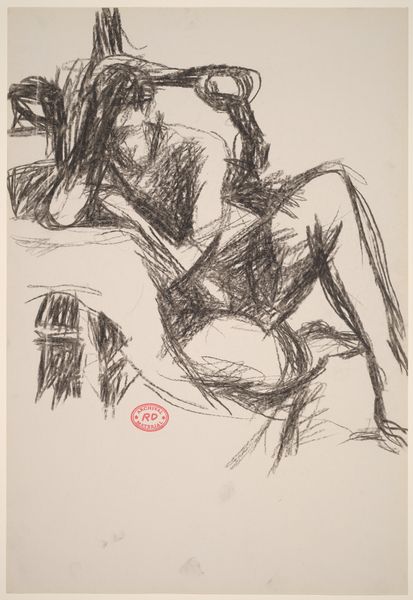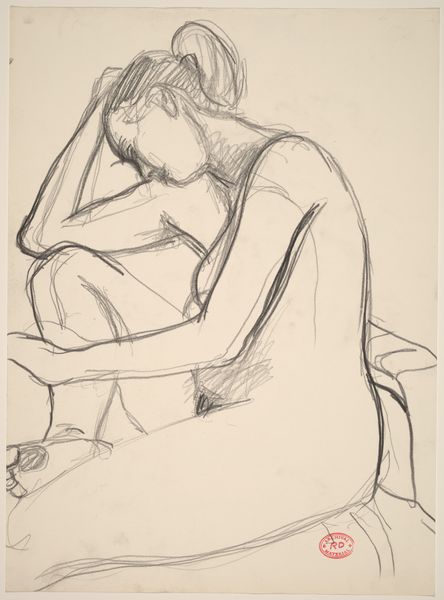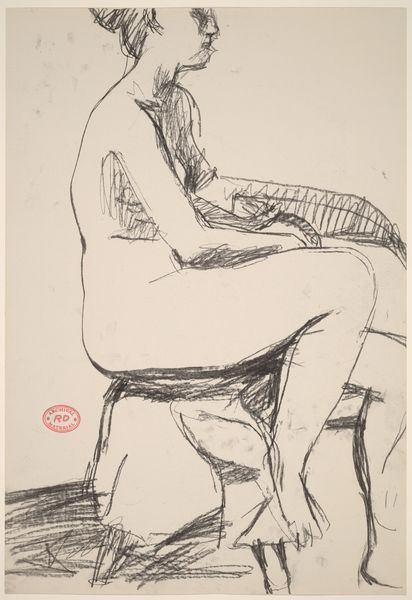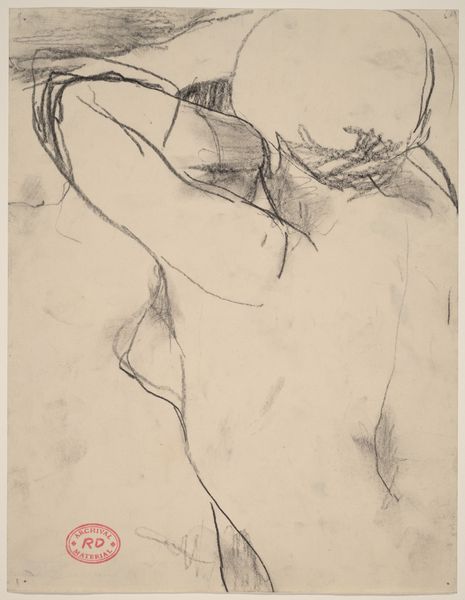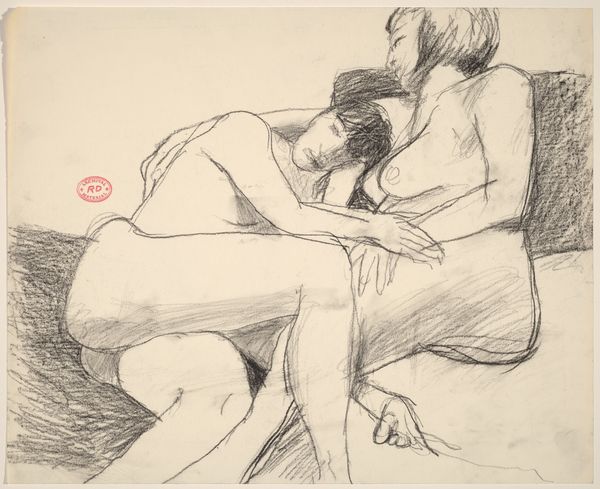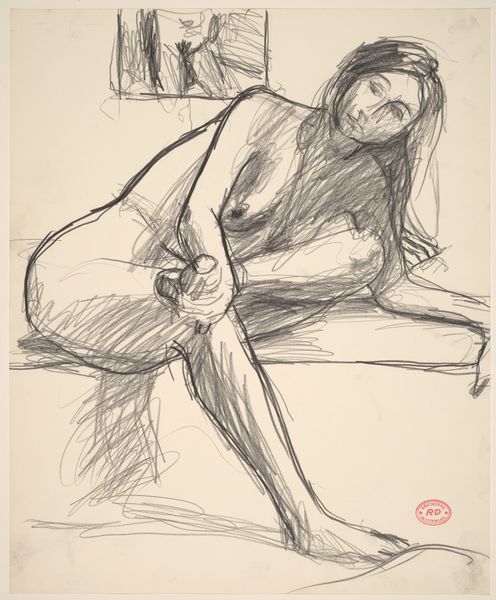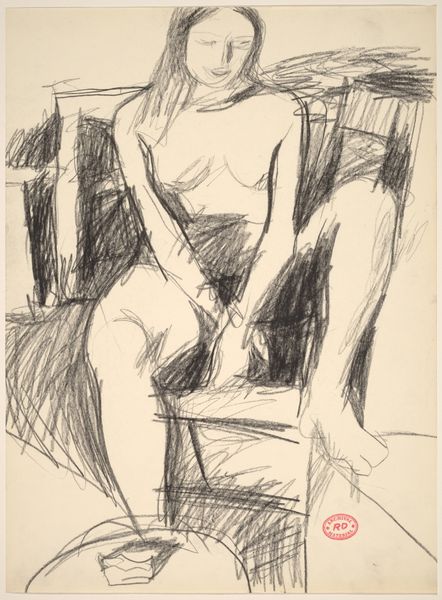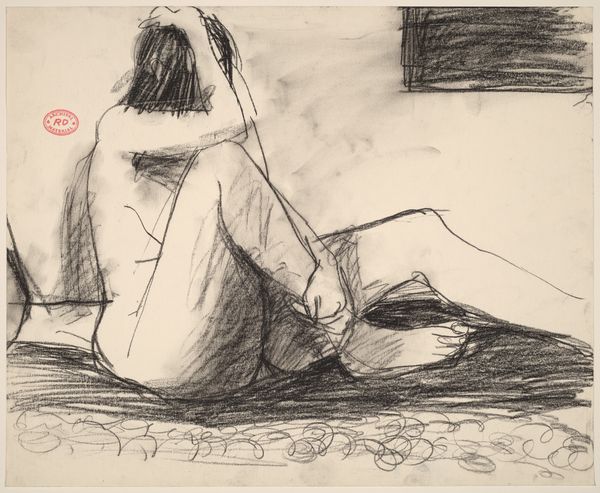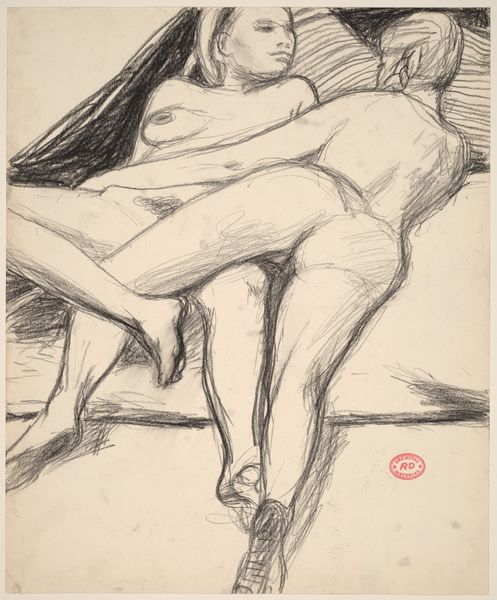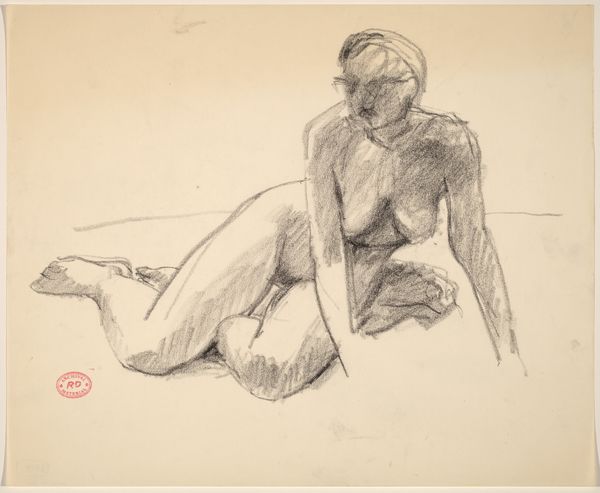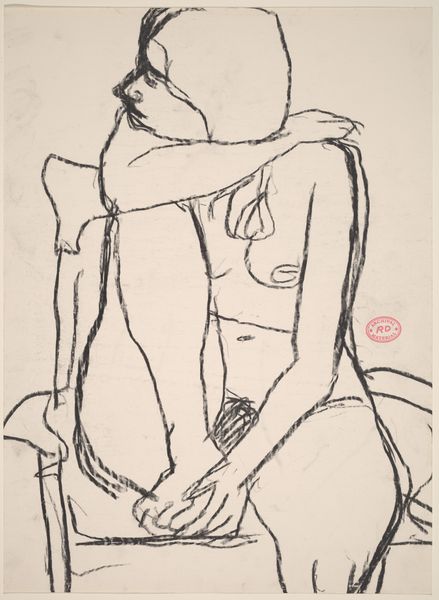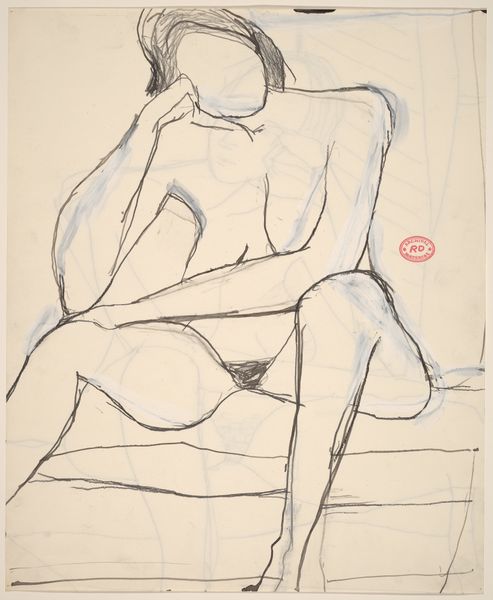![Untitled [looking over the shoulder of two female nudes] [recto] by Richard Diebenkorn](/_next/image?url=https%3A%2F%2Fd2w8kbdekdi1gv.cloudfront.net%2FeyJidWNrZXQiOiAiYXJ0ZXJhLWltYWdlcy1idWNrZXQiLCAia2V5IjogImFydHdvcmtzL2Q0N2NlMzMwLWI0NGUtNGJmNi05YzVjLTU4NTliNDZhODY5NC9kNDdjZTMzMC1iNDRlLTRiZjYtOWM1Yy01ODU5YjQ2YTg2OTRfZnVsbC5qcGciLCAiZWRpdHMiOiB7InJlc2l6ZSI6IHsid2lkdGgiOiAxOTIwLCAiaGVpZ2h0IjogMTkyMCwgImZpdCI6ICJpbnNpZGUifX19&w=3840&q=75)
Untitled [looking over the shoulder of two female nudes] [recto] 1955 - 1967
0:00
0:00
drawing, pencil
#
abstract-expressionism
#
drawing
#
ink drawing
#
figuration
#
bay-area-figurative-movement
#
pencil
#
nude
#
modernism
Dimensions: overall: 43.2 x 35.2 cm (17 x 13 7/8 in.)
Copyright: National Gallery of Art: CC0 1.0
Editor: We're looking at Richard Diebenkorn's "Untitled [looking over the shoulder of two female nudes] [recto]", made sometime between 1955 and 1967 using pencil and ink. It's a rather intimate scene; what jumps out at me is how Diebenkorn renders the figures with such raw and unrefined lines. What strikes you when you look at it? Curator: Well, what I see is the institutional frameworks of display operating. The fact that this sketch is likely framed and shown as "art" complicates its seemingly straightforward subject matter. During this time, the male gaze was very prevalent in art depicting nudes, but I'm compelled to think about *where* this would have been shown, *for whom* and what this choice tells us about both the artist and the public display of women’s bodies. The ambiguity also interests me: are these two women a couple? How might the meaning shift depending on that context? Editor: That's an interesting point. The ambiguity is something I didn't consider. It does make me wonder if the original intention was different than how it might be perceived in a gallery setting today. Curator: Precisely! The display context shapes its meaning. Consider the power dynamics: whose gaze are we adopting as viewers? Diebenkorn’s title, “[looking over the shoulder of two female nudes]”, implies our presence is intrusive; this changes how we, as a museum-going public, are complicit in the potential objectification, doesn't it? Editor: It certainly makes you more aware of your position. The historical lens reveals so much about how the meaning of art can evolve depending on societal norms and where it's being shown. Curator: Indeed, and it shows us that a seemingly simple sketch can carry complex cultural baggage and prompt important questions about viewership and power. It underscores the critical role museums and galleries play in shaping our understanding of art, even a seemingly private moment captured on paper. Editor: I hadn't really considered how the space where it’s exhibited completely changes how a viewer perceives an image. I'll definitely be thinking more critically about context from now on.
Comments
No comments
Be the first to comment and join the conversation on the ultimate creative platform.
